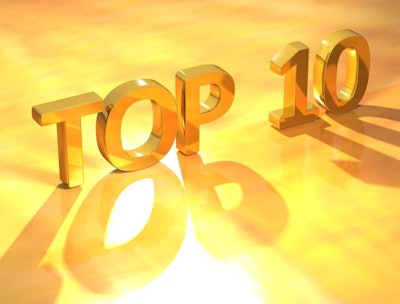
Two weeks into the New Year, you might be burnt out on 2018 retrospect reports; however, the popularity of last year's top performing articles highlight the critical issues facing Feed Strategy's audience and their hunger for more information on these topics.
Aside from our nutrition content, you’ll also notice a prevailing interest in keeping tabs on what others in the industry are doing.
Here are the Top 10 Feed Strategy magazine articles of 2018:
With no surprise, WATTAgNet.com’s 2018 Top Feed Companies report ranked No. 1 last year. The annual report features the leading global compound feed manufacturers, producing volumes of more than 1 million metric tons in 2017. The article includes an analysis of the trends that influenced production during the calendar year and a table ranking the qualifying companies by volume. The exclusive data is gathered by WATT’s research team. Beyond what is printed in the issue, WATTAgNet.com also hosts a comprehensive — and searchable — Top Feed Companies database that includes additional company information and historical data.
Eager to prepare for the year ahead, the December cover story came in as the second most popular feature of 2018. Drawing comments from several feed industry sources, trade uncertainty was identified as the No. 1 issue facing the animal production and feed sectors in 2019.
All content regarding the elimination or reduction of antibiotics in livestock and poultry production performs well; however, Ioannis Mavromichalis’ piece on formulating for “no-antibiotics-ever” production garnered the most attention. In recent years, he has written dozens of articles on topic; search his name on WATTAgNet.com for more related information.
In its 28th year of production, the World Feed Panorama came in at No. 4. WATT editors began collecting compound feed volumes by country in 1990 to offer a collection of production data that didn’t exist elsewhere. The Panorama report compares historical data against 2017 figures tied together with an analysis of the macro and regional trends shaping production. In 2019, keep an eye out for the same exclusive reporting, but branded under a new name.
Contributing editor Zoe Kay discusses how the amount of scalable eggs produced becomes even more important as cycle lengths increase along with a move toward cage-free production. Here’s a tip: Along with nutrition, genetics and management have important roles to play in ensuring the profitability of the egg industry.
Our annual survey of WATT global poultry and feed audiences reveals interesting trends in 2018 feeding, formulation and the sway consumers increasingly have on how producers feed their flocks. Last year, participants noted that antibiotic-free production was their greatest challenge and shared their feed additive solutions for maintaining poultry health and productivity. If you find this report insightful, watch out for the March 2019 edition, which will be released in a few weeks.
Faced with the vitamin A and E shortage crisis of 2018, nutritionists were looking for alternatives. Ioannis Mavromichalis’ timely article on the topic offered valuable suggestions.
The demand for information on new technologies and feed additive solutions for the replacement of antibiotics in poultry and livestock production is ongoing. To this end, Zoe Kay delivered with her article on advances in bacteriophage research and development.
Interest in phytogenic feed additives and their efficacy in animal production persists. Helen Warren’s article examines the attributes of botanicals in dairy rations and their effect on rumen, fermentation and metabolism.
Strategies for improving gut health in poultry and swine production has made headlines for several years now. However, beyond performance, how do these efforts translate into improved animal welfare? Feed additive suppliers weighed in.

















